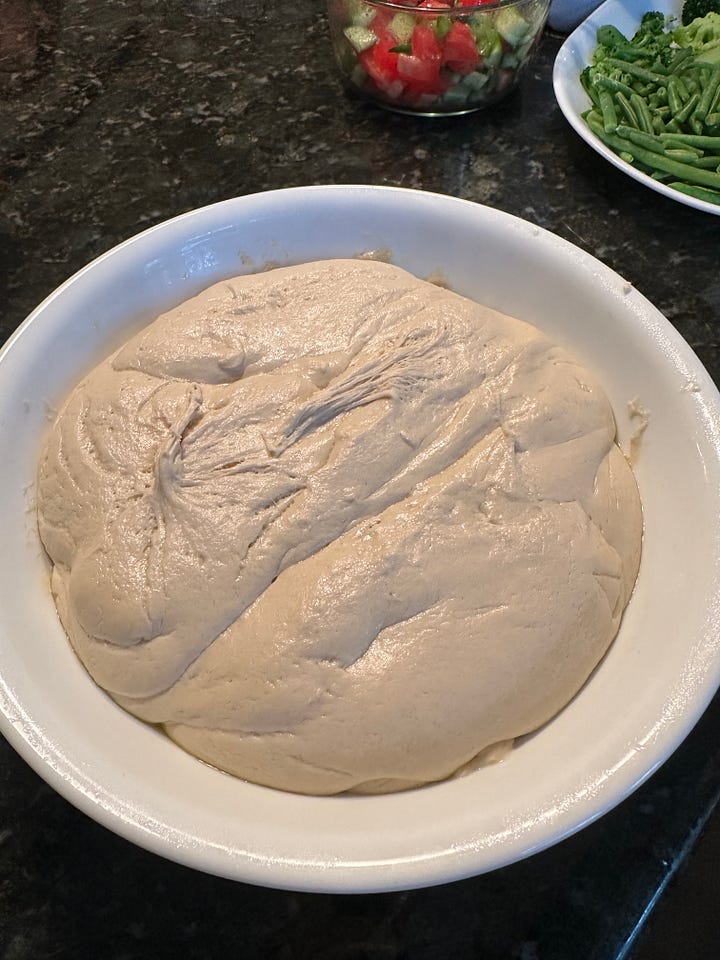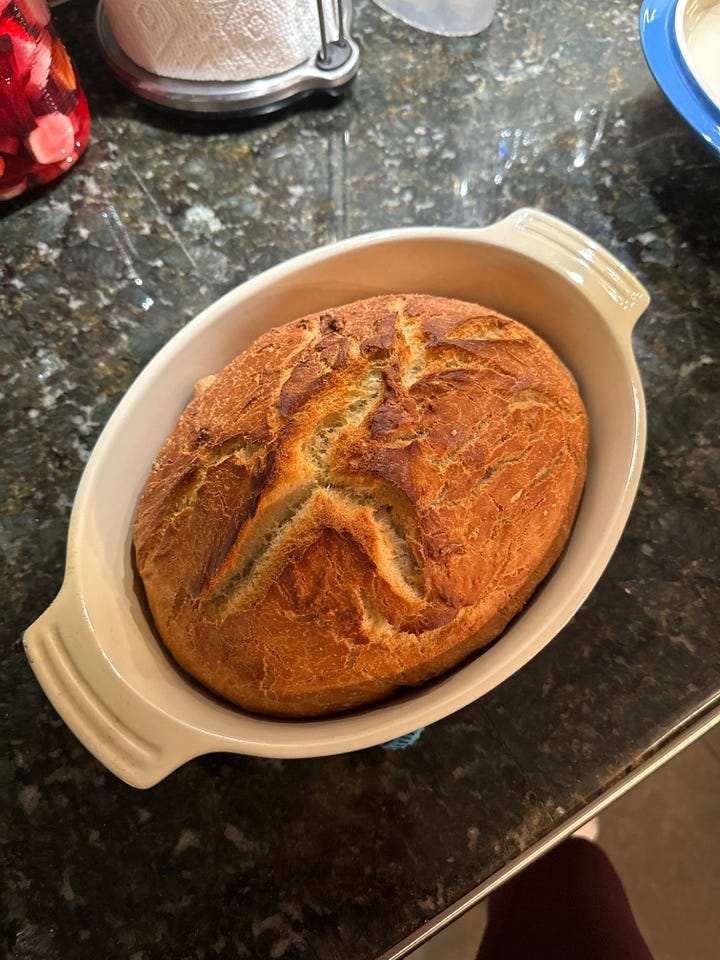Yeast is found everywhere: in the air, on plants, in soil, on our skin, and in the intestinal tract. They are single-celled organisms that fall under the Kingdom Fungi. Yeast grows when present in carbon-rich areas - this is another way to describe fermentation. When yeast has sugars to feed on, the cells grow and convert the sugar to carbon dioxide and ethanol. This is why we see bubbles in dough after proofing it. Yeast is used in a myriad of foods. Many of the foods we regularly consume, such as bread, beer, and wine, utilize yeast. Yeast fermentation can improve the flavor and aroma characteristics of foods due to their alcohol and organic acid production (1).
Saccharomyces cerevisiae, otherwise known as baker's or brewer's yeast, is the most common yeast used in fermented foods (1). Most of the dry activated yeast packets you buy in the grocery store are S. cerevisiae. When people had to stay home throughout the pandemic, it was hard to find yeast at the grocery store. Many people took up baking to fill their time, but just like toilet paper, there were supply chain issues with yeast. One way to counter this was to create your own sourdough starter. As mentioned before, yeast is present everywhere, so by creating your own culture, you can use the starter for many recipes that would require dry yeast. By mixing water and flour, then fermenting on the countertop for approximately one week, you will have created a mixture of wild yeasts and bacteria that can then be used for bread and other recipes.
One of the most fundamental parts of yeast fermentation is temperature. When dough is rising for bread, it is important to remember that yeast prefers an environment somewhere between 25-30 °C (2). This is not to say that it is impossible to ferment something in cooler temperatures. In fact, there are plenty of slow fermentations that take place in the refrigerator, as well as yeasts that are cold-adapted, also known as psychrophiles (cold-loving) and psychrotrophs (cold-tolerant). The response to environmental stress, such as temperature, is important in food processing as it plays a role in how much an organism can grow. If the yeast isn’t growing, chances are the food product will not taste or cook the way you want it to. When a dough doesn’t rise, you end up with a dense bread that doesn’t taste too good.
To wrap this up, I wanted to share a quick bread recipe that I tested out the other day. I wanted to bake bread but didn’t have enough time to wait for the proofing step. I found this recipe that takes a little bit over an hour all in all. After prepping the dough, you quick-start the yeast by placing the dough in the microwave in two rounds of 25 seconds. After about 20 min, you’ll have a dough that has doubled in size and is ready to bake.
My results did not disappoint. As you can see below, the dough is fluffy and has most definitely risen. The warm and moist environment in the microwave is the perfect condition for this yeast to thrive, and while this is a sacrilegious method, it does, in fact, work.


Here is what the recipe called for:
2 (1/4-ounce) packets active dry yeast (4 1/2 teaspoons)
1 tablespoon granulated sugar
1 1/2 cups water
3 1/2 cups bread flour (okay to use all-purpose as well)
1 1/4 teaspoons salt
3/4 teaspoon balsamic vinegar
I mixed warm water with the dry yeast and sugar, then waited for the yeast to bloom. Once it was ready, I added only 3 cups of flour (save the 1/2 cup for the end), salt, and balsamic vinegar, then kneaded until combined. I added the last 1/2 cup of flour, then kneaded for 7 minutes. I then transferred the dough into a microwave-safe bowl and covered it with a wet towel. I microwaved for 25 seconds, then allowed the dough to sit for 5 minutes, then microwaved again for 25 seconds, and allowed the dough to sit for 15 more minutes. In the meantime, I preheated my oven to 450 °F and heated up my Dutch oven. Once the 15 minutes were up, I added my dough into the hot Dutch oven, covered it with the lid, and allowed it to bake for 30 minutes covered and 10 minutes uncovered. Voilà! You then have bread that's ready to eat and only took about an hour and 10 minutes total to make.
Let me know if you try this recipe! It’s super simple and allows you to have fresh bread in little time.
Outside of food, yeast has a huge impact in our world. It is a star in biotechnology and contributes to medications, fuel, and scientific research. Researchers utilize yeast to understand cell division and disease mechanisms. Next time you eat a slice of bread or sip a cold beer, think about the yeast that played a role in the flavor and aroma of these tasty delights. It’s a small, but powerful organism.
References:
Jeong W-S, Kong H-R, Kim S-Y, Yeo S-H. Exploring the Health Benefits of Yeast Isolated from Traditional Fermented Foods in Korea: Anti-Inflammatory and Functional Properties of Saccharomyces and Non-Saccharomyces Strains. Microorganisms. 2023; 11(6):1503. https://doi.org/10.3390/microorganisms11061503
Liszkowska, W., & Berlowska, J. (2021). Yeast Fermentation at Low Temperatures: Adaptation to Changing Environmental Conditions and Formation of Volatile Compounds. Molecules (Basel, Switzerland), 26(4), 1035. https://doi.org/10.3390/molecules26041035




Who doesn't like freshly baked bread? I enjoyed reading and feel the taste in my mouth...